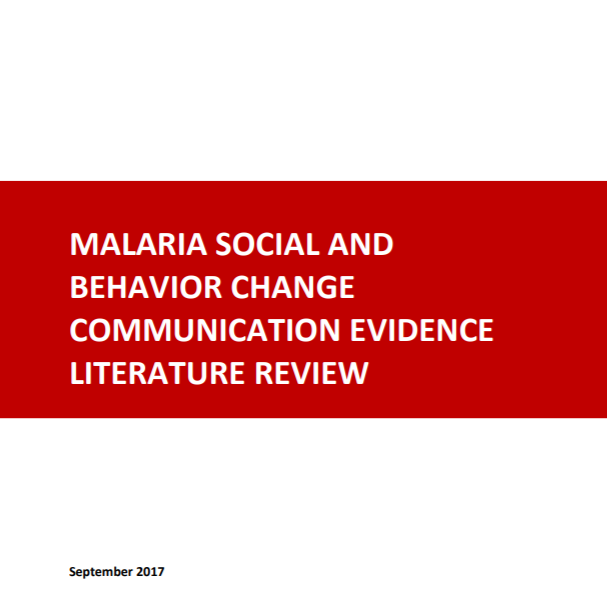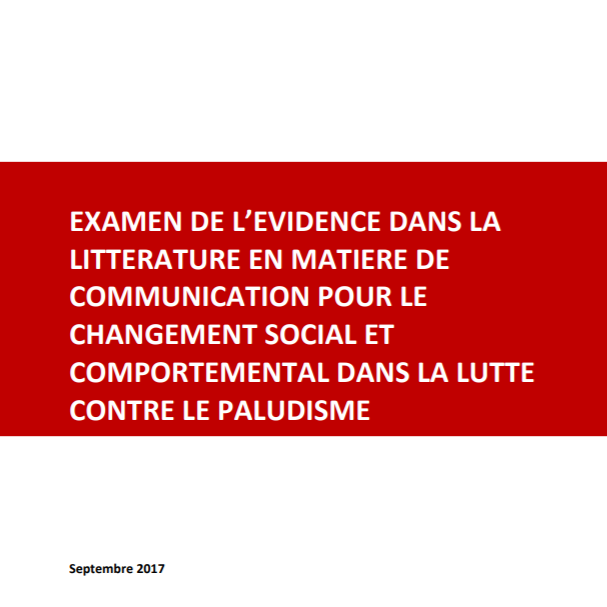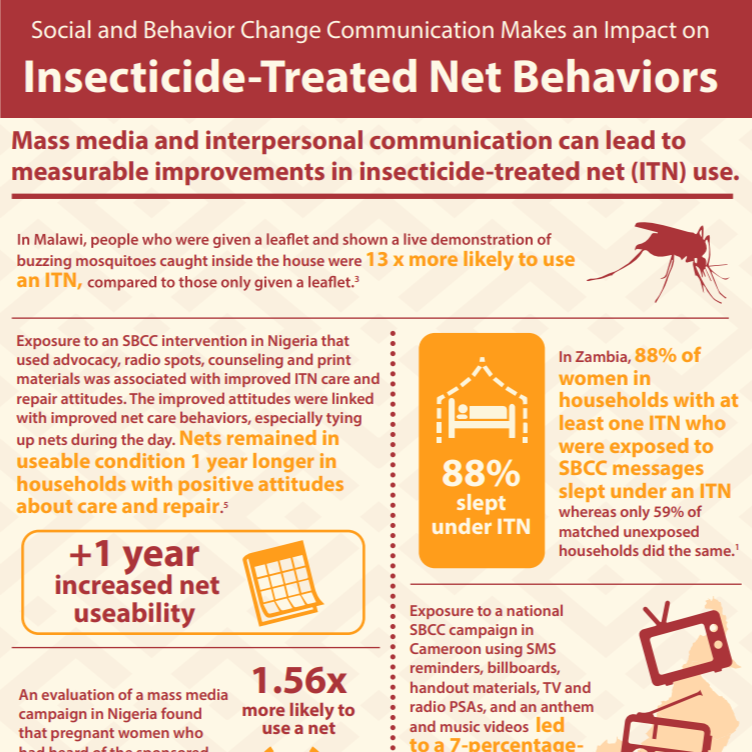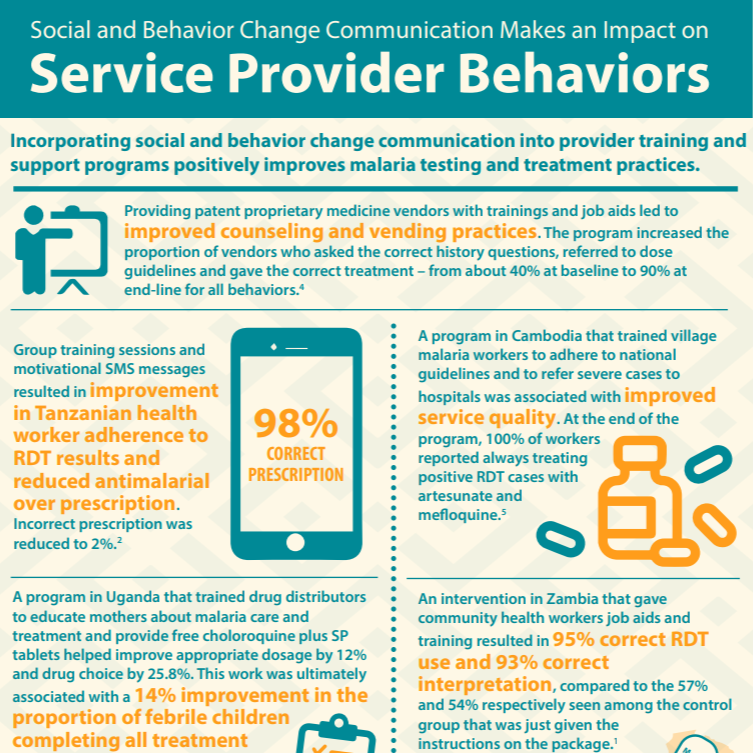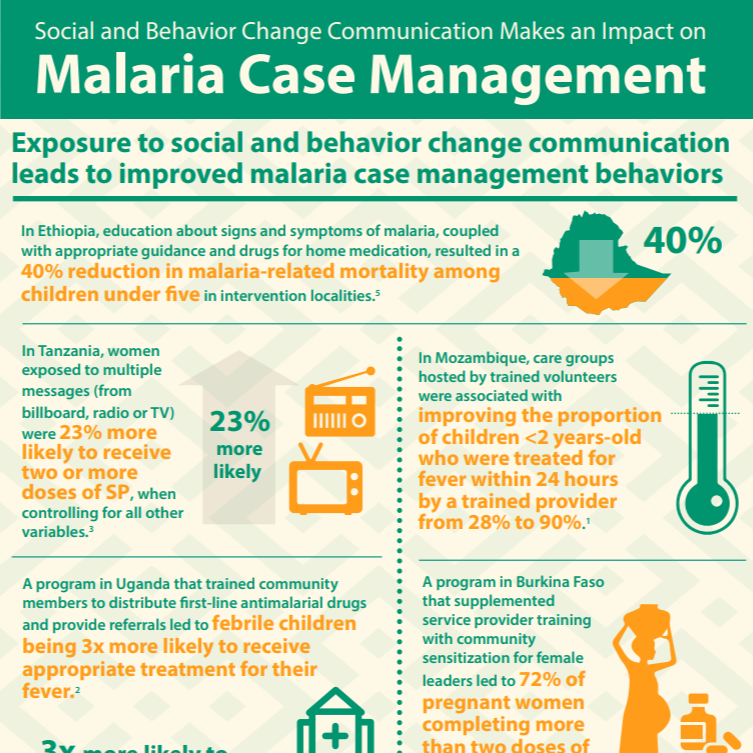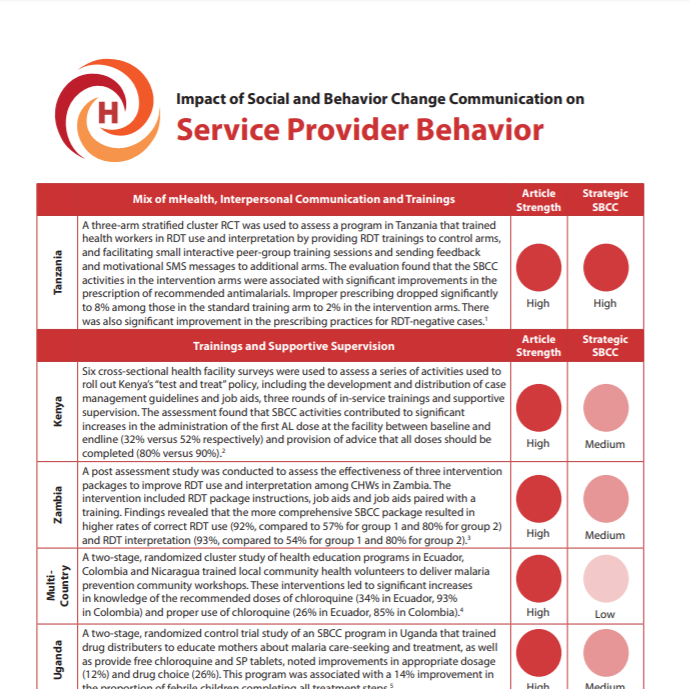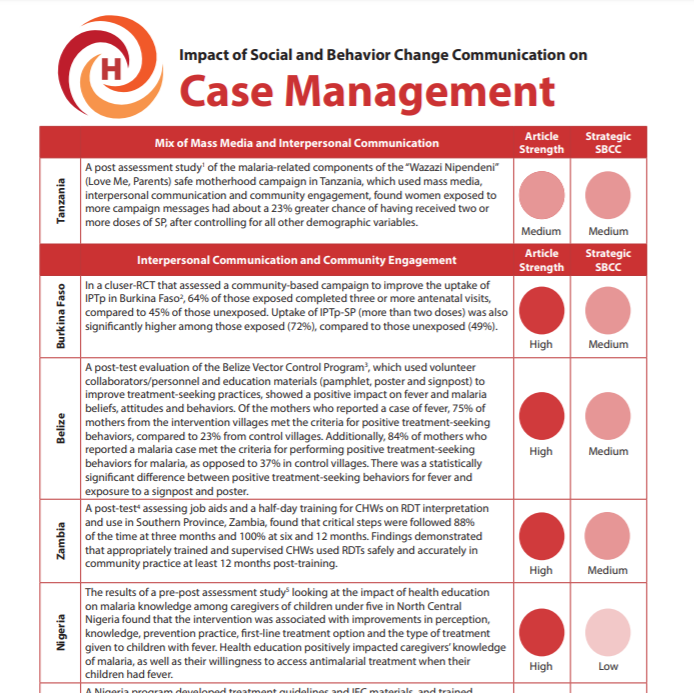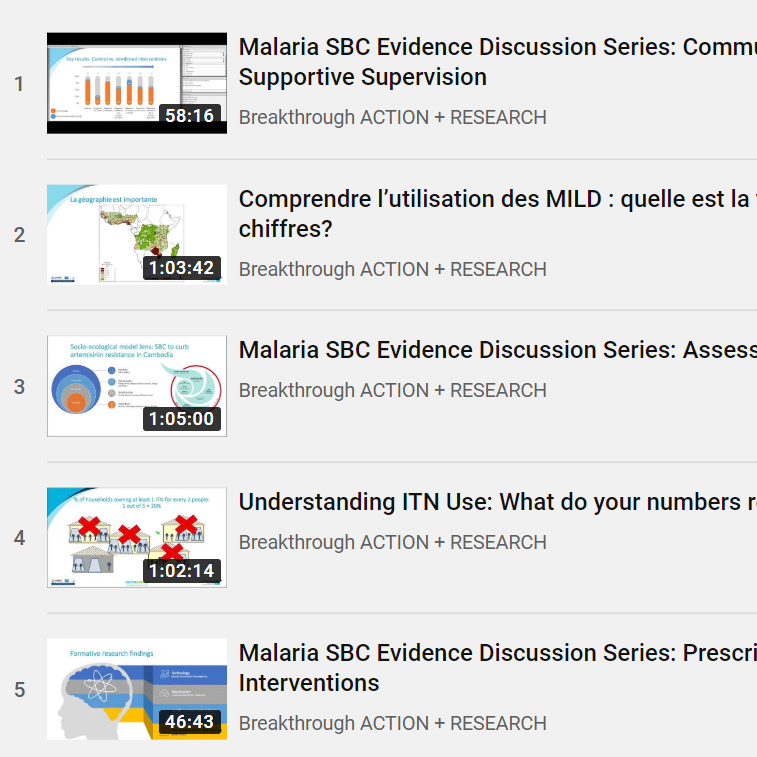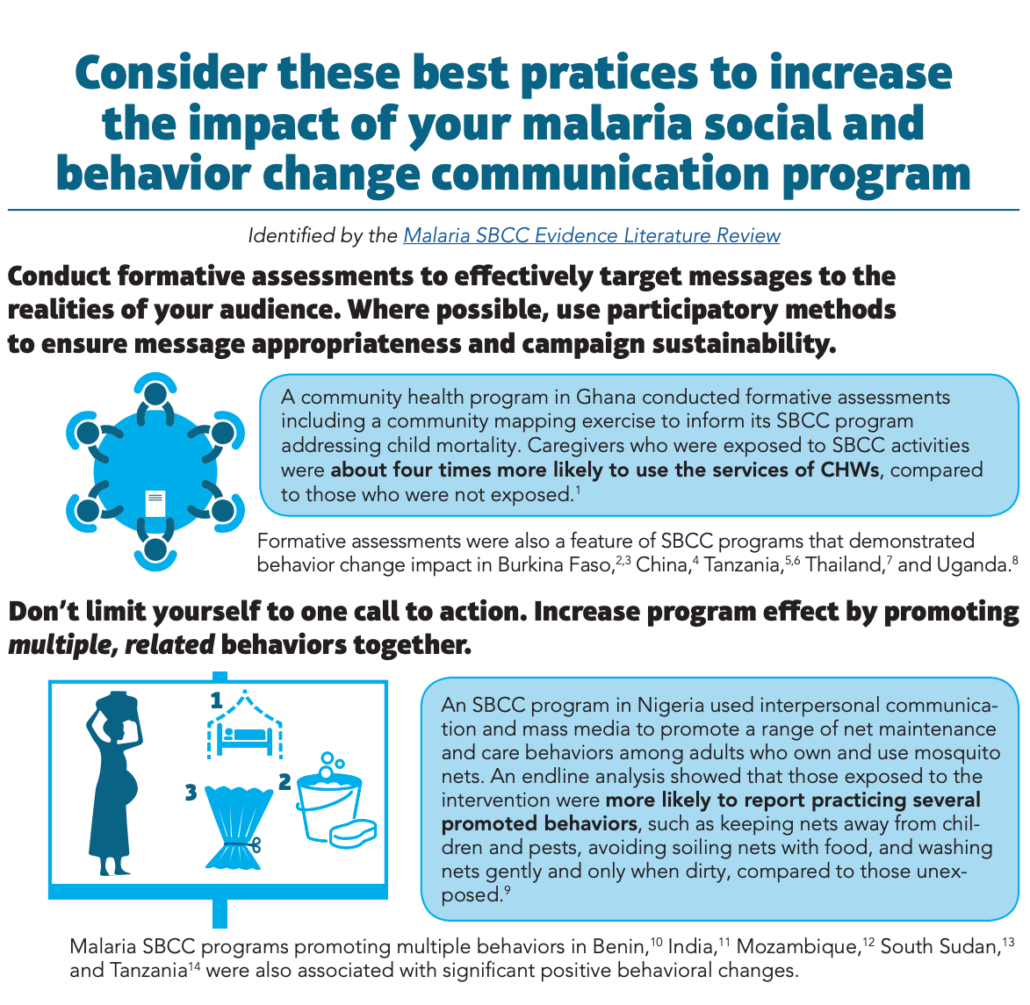About the Malaria Database

For decades, SBC has been used in malaria programs to positively influence behaviors around case management, malaria in pregnancy, insecticide-treated nets and indoor residual spraying. However, the evidence base for the impact of SBC on malaria-related behavioral outcomes is still growing, especially as malaria interventions and commodities scale-up.
The SBC for Malaria Evidence Database documents the evidence to date. The initial set of articles included were selected as a result of a critical review of the literature using a multiphase search and review process, involving abstract and full-article reviews of approximately 3,600 peer-reviewed articles and 1,700 grey literature documents. Each article was then scored on two indicators: the strength of the evidence presented in the article and the extent to which the SBC activity used best practices during the design and implementation of the program. A report summarizing the findings of the literature review is available in both English and French. Since then, the evidence database is updated annually with a search for new literature that meet the search criteria and inclusion of those articles that show evidence of impact on malaria attitudes and behaviors.
The database presents a collection of over 100 articles describing interventions or studies that address malaria challenges through SBC approaches. Some studies address the same intervention across multiple articles, while other studies evaluate multiple interventions in the same article. Initially based on evidence on the influence of social and behavior change communication (SBCC) on malaria-related behaviors, the database has expanded to include broader SBC approaches.
Articles can be filtered by checking boxes in the following categories: Country, Malaria Technical Area, Type of Communication Intervention, Study Design and/or Audience Segmented. Unchecking the boxes or clicking the “clear filters” button will return the database to its original state. The database can also be filtered by searching keywords in the “search” box above the database. Database results can be printed, copied or converted into Excel/CSV files by clicking the appropriate buttons below.
In addition to the full report, key findings from compiling the database have been highlighted in a series of infographics and factsheets.
FEATURED ARTICLES
- Rassi et al. (2018). Improving health worker performance through text messaging: A mixed-methods evaluation of a pilot intervention designed to increase coverage of intermittent preventive treatment of malaria in pregnancy in West Nile, Uganda. PLoS One, 13 (9).
- Kilian et al. (2016). The impact of behaviour change communication on the use of insecticide treated nets: a secondary analysis of ten post-campaign surveys from Nigeria. Malaria Journal, 15(1):422.
- Canavati et al (2016). Evaluation of intensified behaviour change communication strategies in an artemisinin resistance setting. Malaria Journal, 15:249
- Koenker et al. (2015). Impact of a behaviour change intervention on long- lasting insecticidal net care and repair behaviour and net condition in Nasarawa State, Nigeria. Malaria Journal, 14 (1):18.
- Cundill et al. (2015). Prescriber and patient-oriented behavioural interventions to improve use of malaria rapid diagnostic tests in Tanzania: facility-based cluster randomised trial. BMC Medicine, 13 (1):118.
- Ricotta et al. (2015). The use of mediation analysis to assess the effects of a behaviour change communication strategy on bed net ideation and household universal coverage in Tanzania. Malaria Journal, 14:15.
- Boulay et al. (2014). Comparing two approaches for estimating the causal effect of behaviour-change communication messages promoting insecticide-treated bednets: an analysis of the 2010 Zambia malaria indicator survey. Malaria Journal, 13 (1):342.
- Das et al. (2014). Strengthening malaria service delivery through supportive supervision and community mobilization in an endemic Indian setting: an evaluation of nested delivery models. Malar J, 13 (1):482.
- Counihan et al. (2012). Community health workers use malaria rapid diagnostic tests (RDTs) safely and accurately: results of a longitudinal study in Zambia. The American Journal of Tropical Medicine and Hygiene, 87 (1):57- 63.
- Gies et al. (2009). Community-based promotional campaign to improve uptake of intermittent preventive antimalarial treatment in pregnancy in Burkina Faso. The American Journal of Tropical Medicine and Hygiene, 80 (3):460-469.

